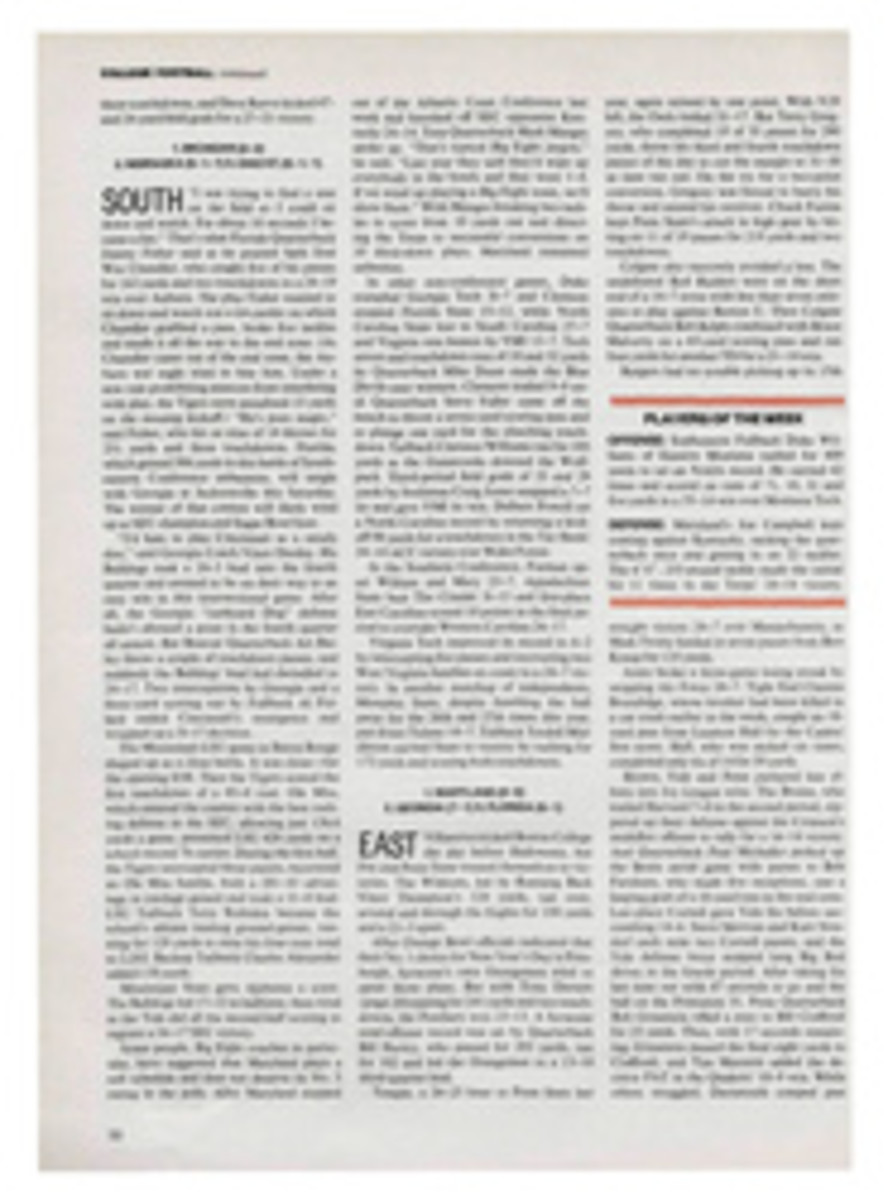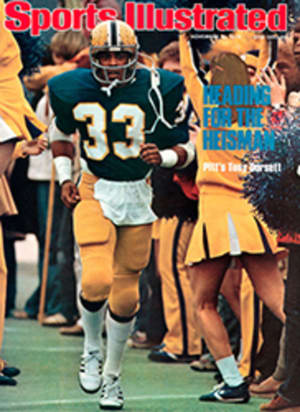
the bowl doth run in biasse waies
Next week, when players from the U.S. and several other countries meet in Clearwater, Fla. for the 55th National Open Lawn Bowling Tournament, in all likelihood the event will, once again, not be news. Even last year's nationals, which drew a record 450 contestants to five clubs in the San Francisco Bay area, received scant coverage in the local sports pages.
Tradition has always played a big part in the game and traditionally everyone is supposed to be nonchalant about the sport until he has strapped on his gold retirement watch. This attitude does not encourage a lot of newspaper ink.
But bowling on the green was not always a non-event. In England they still talk about the game of July 19, 1588 at Plymouth Hoe. Sir Francis Drake and Sir Walter Raleigh had just finished the seventh end in a tense match with a couple of other lords when a naval captain burst on the scene with a report that the Spanish Armada was moving up the English Channel. Sir Francis informed the captain that he would be along, but first the game had to be completed.
Still, a casual observer stumbling upon rows of white-clad figures bent over the grass in rapt concentration of a dark, slow-moving object could be forgiven for thinking that nothing save the players had changed in lawn bowls since Drake's time. In certain respects, he would be right. The game itself is much the same as it was then except that most bowls are now molded of plastic instead of carved from wood, the rules have been standardized and women are wearing pants. Nevertheless, there are disturbances within the once tranquil and untrammeled world of lawn bowls: young blood is mixing with old, and women are beginning to take the measure of the men. Change is on the way.
The contemporary version of lawn bowls dates back four centuries, when someone hit on the idea of using a lopsided bowl instead of a round one, reasoning that "a little altering of the one side maketh the bowl to run biasse waies."
The "biasse" accounts for much of the complexity of the game. In lawn bowls the shortest distance between two points is seldom a straight line. When rolled in the usual way (for a draw shot) the bowl will curve toward its heavier side, more so as it loses momentum, enabling the player, with proper pace and angle, to make it skirt around bowls lying in the way of the "jack"—the smaller object ball—or tap an opponent's bowl out of a cluster around the jack.
Without this 16th century innovation the game might have died and been buried with Henry VIII, who nearly killed it anyway when he banned lawn bowling because of all the gambling that was going on. Of course, the king exempted himself and other stakes-loving noblemen from the ban.
Nowadays it is not betting people, but those who like chess problems and physics who gravitate to lawn bowls. This is due partly to another devilish characteristic of the game: if a bowl is rolled slowly toward its object (requiring, say, 18 seconds to reach the jack) the green is said to be "fast"; if the bowl is rolled quickly (10 seconds to cover the same distance) the green is "slow."
The logic of this semantic contradiction is that on heavy, slow grass the bowler must use enough initial force in his delivery to give the bowl a momentum that will carry it rapidly all the way to the jack, which can be as far distant as 108 feet. But on a fast green the bowl will be sent forth more gently, so that it will decelerate properly as it nears the target; this gives the bowler far more control of the bowl's course. (Aside from tactical reasons, there are practical advantages when the bowl rolls and rolls: a skilled smoker, for example, has time to light a pipe properly in the time it takes his bowl to reach a long jack on a fast green. On a slow green he has barely time to draw a puff.) At Clearwater the rinks, will have a composition surface called Rubico that plays slightly slower than the fastest turf rinks. The contestants anticipate little difficulty adjusting their styles to the artificial surface. Esthetically it may be another matter—like the artificial surface that replaced Forest Hills' grass courts, Rubico has a drab gray-green tint.
Quite obviously, then, lawn bowling is ready to prove that it is not so firmly wedded to tradition that it cannot adapt to the 20th century. The feeling is that the game has suffered too long from a low, and aged, profile, that a lively sport of marvelous intricacy requiring considerable skill has been kept pretty much in the closet. Today young people are beginning to break into the closet and the older generation is generally delighted.
No one takes the sport more seriously than 38-year-old Frank Souza of San Francisco. He is typical of younger players who are giving up other sports for the special rewards of lawn bowling. "I used to play a lot of tennis," he says, "but one day I was watching my father practice lawn bowling. I thought, it would be a cinch. When I tried it I found out it wasn't so easy." In 12 years of competition Souza has been on the winning doubles and triples teams at the national open and runner-up in the U.S. Singles, which pits divisional champions against one another. "In tennis," he says, "if you're not 19, forget it. With this sport you have a fair chance whatever your age."
If lawn bowling is acquiring a new image, that image looks a lot like Dave and Judy Redo. It is not so much the way, they drive a bowl as the way they drive themselves. Last year Dave was general chairman of the men's national open while Judy was co-chairing the women's event. Dave, 39, comes from a lawn bowling family but didn't take any interest in the game until after he left college. Both he and Judy, 37, enjoyed other sports before they took up lawn bowls. "We like competition and we like to travel. This gives us both," Dave says. "I also like it because both Judy and I can play equally. She almost gave up tennis because she doesn't like to lose."
A lot of other women share this sentiment. In fact, the biggest changes in the game are coming from them. Six years ago 77 women bowlers organized the American Women's Lawn Bowls Association under a charter from the international women's organization. They held their first national open tournament the following year and this year the AWLBA has more than 600 women on its membership rolls. Now some women are pressing to join the men in a single organization, but they are meeting stiff resistance. One of their officials says flatly, "The two organizations will never merge because men belong to the International Bowling Board and there cannot be any women members of that."
Toni Mercer of New York City is not one to say never. She became a lawn bowler while she was watching a match in Central Park. A player put a bowl in her hand and said, "Try it." Within a year she had won her first tournament. She thinks lawn bowling could be a swinging sport. But it will be up to the women. "I'm not a women's libber," she says, "but I'll tell you one thing. Men are negative. It takes women to change things. Men don't have the imagination. They don't want their nest disturbed." Mercer and other women members of her club are responsible for a publicity campaign that doubled its membership in six months. Now they want to shake up the other 134 clubs around the country.
Even if every club in the U.S. boosted its membership by 100%, that would only bring the lawn bowling population to 20,000—still a lot of bowlers away from the 50,000 in New Zealand, the 60,000 in South Africa, the 500,000 in Australia or the 400,000 in the British Isles.
It will be a while, too, before the grandpa-grandma image disappears, if only because the older folks are happy and fully capable of meeting youth on an equal athletic footing. Eighty-two-year-old Margaret Hodges of Sun City, Calif. played four matches in a single day at last year's open. The next morning she conceded that her legs were a little stiff "until I started to bowl again." She wasn't eliminated until the semifinals and then by the eventual champion.
The old people are in no hurry to be laid to rest underneath the green or even the Rubico. The whippersnappers will first have to beat them, and that's easier said than bowled.
FIVE PHOTOS
BILL EPPRIDGE
At the 1975 open in San Francisco entrants accept the ancient challenge of rolling their lopsided bowls closest to the white "jack." Next stop: Clearwater, Fla.
TEN PHOTOS
BILL EPPRIDGE
PHOTO
BILL EPPRIDGE
Bowls often form a picket line around the jack after arcing journeys of more than 100 feet.

